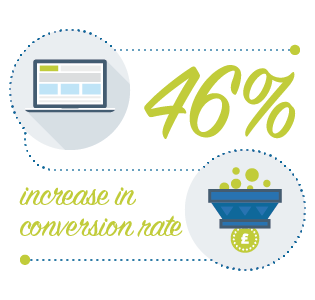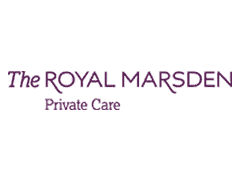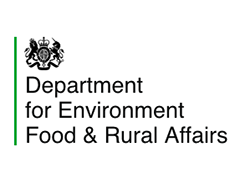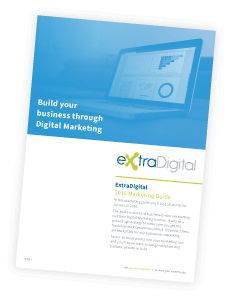Marketing strategies need to deliver the best Return on Investment (ROI) for business. To effectively report and deliver ROI we must measure the number of conversions against the total marketing costs.
It’s important to make sure you are measuring and tracking your conversion rate from the beginning. Establishing your marketing objectives early on will not only allow you to make comparisons but also allows tactics to be adapted based on initial data to increase revenue and ROI.
Could your business be taking a much more cost-effective approach? Are there further marketing techniques you should be thinking about? This article looks at the marketing metrics that matter most when measuring the success of marketing campaigns.
Return on Investment
Let’s start by defining Return on Investment
In simple terms ROI is stated as: The percentage of revenue that you have gained in comparison to what you have initially spent. A higher ROI shows a more effective marketing strategy. The ROI is an indicator of how well your marketing strategy is working to bring in leads.
The basic ROI formula is:
ROI = Return minus investment, divided by investment, expressed as a percentage.
A simple example of how the formula works is:
If you spend £500 on creating a piece of content and get leads worth £2000, then your return is £1,500 (£2,000-£500) and your ROI is 300% (£1,500/£500)
So how do we measure this?
To measure the ROI we need to know both the costs (investment) and the return (sales value). Exactly how we measure these depends on the tactics or marketing strategies used.
Marketing Strategies
Content Marketing
The creation and sharing of online material can be used to reach out to your target audience. Content Marketing focuses on creating valuable and relevant content that engages with your audience.
The audience may visit your website or download more information or sign up for an informative newsletter.
Here we are measuring both traffic and contacts. If we know the conversion rates of traffic to contacts, contacts to leads and leads to customers we can give a value to the traffic or contacts generated by the content. This gives a value to the content marketing and enables an ROI to be calculated.
Social Media Marketing
This includes using social media platforms such as LinkedIn, Twitter, Facebook, Instagram and Snap Chat.
Social media platforms are used to attract visitors and gain awareness of business products or brands, and then to keep this audience informed and interested. One task is to nurture the contact along the buyer journey.
With Social media we can measure impressions and actions or engagement. If we know the conversion rates of engagement to leads and leads to customers we can give a value to the social media campaign. This enables a ROI for social media marketing to be calculated.
PPC
Pay Per Click advertising brings customers to your site through paid advertising.
One advantage of PPC advertising is your ads are only shown to people actively searching for information, so although expensive the conversion rates are high as the paid traffic to your website is well targeted. With PPC it is easy to measure the cost per lead and then cost per acquisition and determine the ROI.
Email Marketing
Email marketing reaches an audience that have already expressed interest in your area of business or service. The message can be tailor-made to your contacts especially if you segment your contact list. It can reinforce brand awareness, boost sales and establish and maintain customer loyalty.
Successful email marketing campaigns measure number of qualified leads or customers, and not open rates or click rates. This is because it is the number of qualified leads or customers or sales that is used in calculating the ROI of the email marketing campaign.
A good marketing strategy will include a mix of tactics such as those above to generate traffic, leads and customers or sales. Measuring the ROI of each enables more effort to be placed on the most successful tactics, and increase the total ROI.
Tools for tracking conversions
A sales team will know from the order books the total value of sales, but how do we know where these have come from? The answer is tracking tools.
Google Analytics
Google Analytics is an excellent tool which can be used to measure how well your content is doing. This tool makes it easier to create goals and explore how many users are bouncing off pages. This allows you to review poorly performing content and review the content you have to offer on your site. It enables you to see the general source of leads and customers based on total values. It does not allow you to track individual users,
Marketing Automation
Marketing automation tools such as HubSpot enable a better understanding of how individual users interact with your content, and you can see which pages your leads and contacts have visited.
AdWords
AdWords conversion tracking allows accurate reporting of which search terms and ad copies produce actual sales or customers, and is very helpful in optimising PPC performance.
Email Marketing
Email Marketing uses tracking scripts to record when emails are opened and viewed, as well as recording subsequent actions such as visiting a webpage.
Download our FREE eBook
Six Marketing Metrics
your Boss actually cares about
All these tools on their own are useful but join theme together or use one integrated system and you have a very powerful inbound marketing tracking system that can show you which campaigns are converting to customer or sales. These marketing automation tools can show the relative ROI of your marketing campaigns and help you to improve your ROI.
If you are looking for further advice on how you can increase conversion rates and ROI, our team of experts will be happy to help. Get in touch to learn more.















